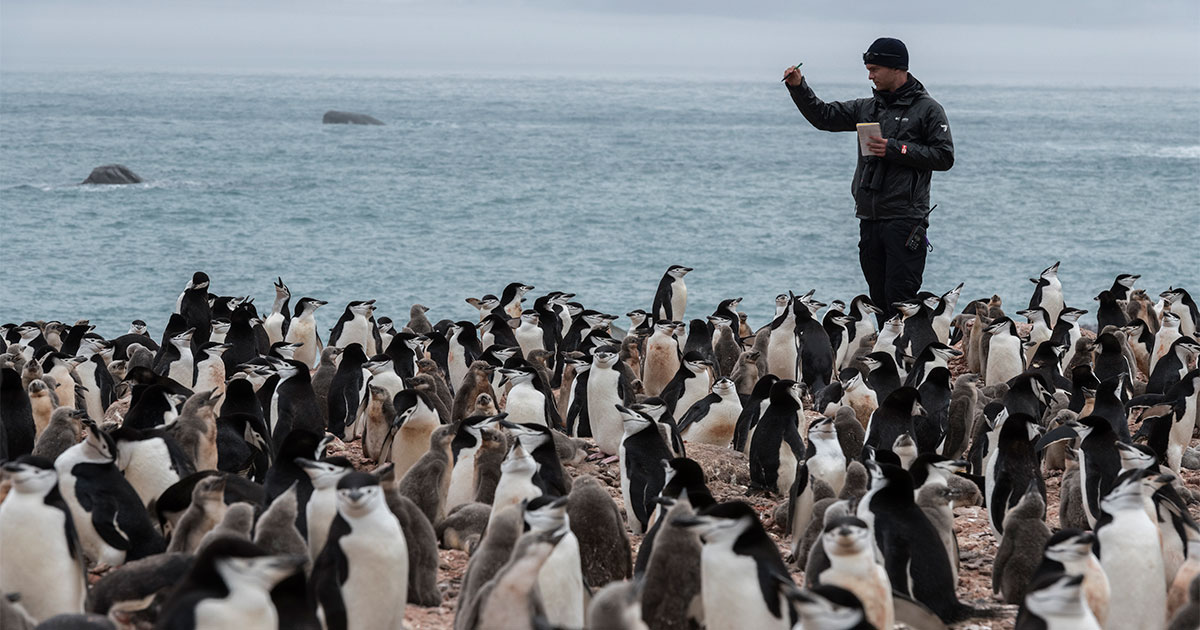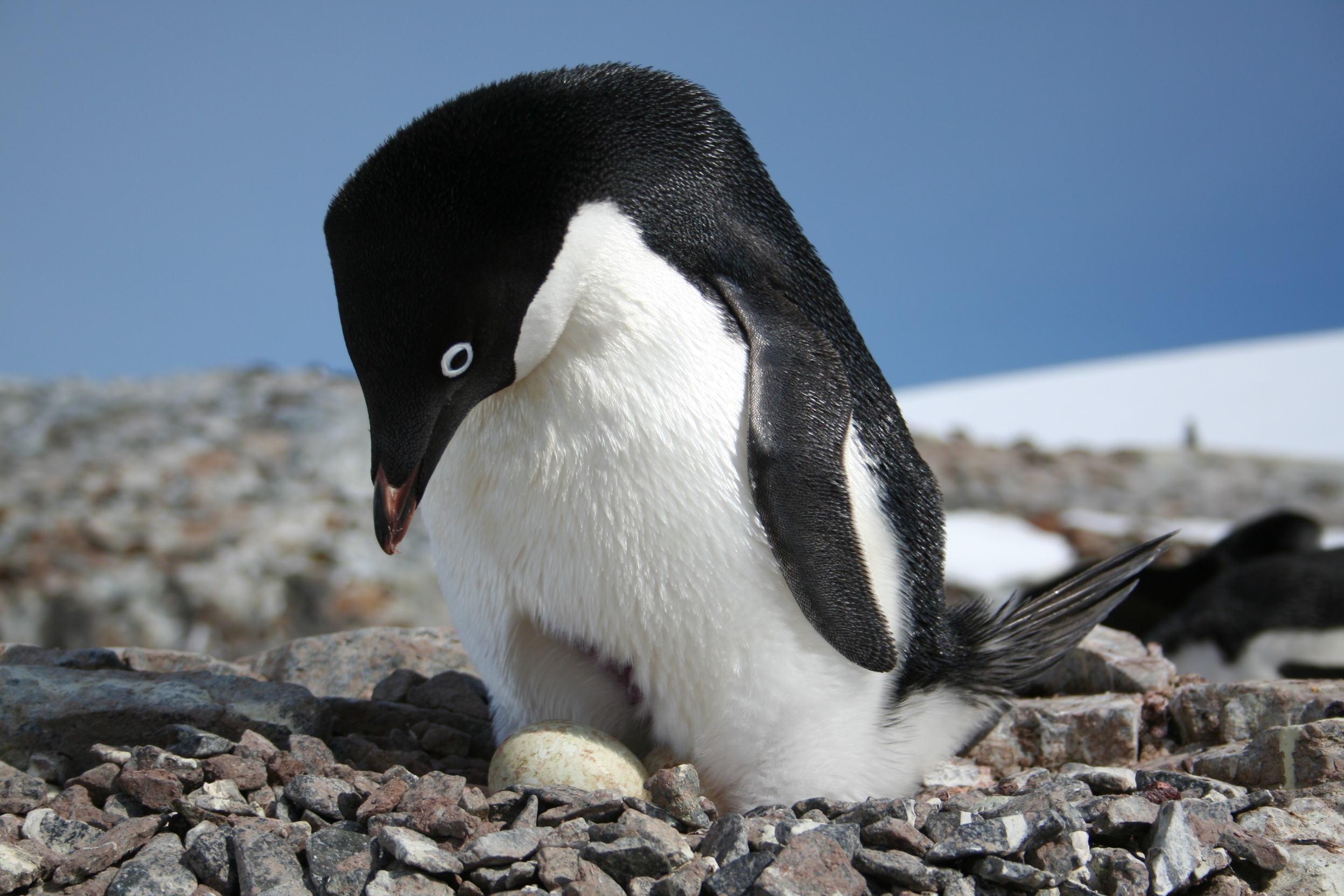Just over two hundred years ago, a daring group of explorers set eyes on Antarctica for the first time. As the vast frozen landmass dominated their horizon, it was likely inconceivable that any living creature could thrive on this otherworldly continent at the bottom of our planet. But in fact, this icy terrain and surrounding ocean supports a rich community of wildlife. With climate change and better technology opening the region to human activity, talks are underway to determine how best to protect this vital polar wilderness.
For over four decades, BirdLife International has been providing evidence of some of the most important places for birds and their associated biodiversity through the Important Bird and Biodiversity Areas Programme (IBAs). These are areas assessed against a globally standardized set of criteria and are crucial for the persistence and conservation of bird populations and the biodiversity they depend on. Now, in a collaborative new study led by BirdLife International, the University of East Anglia (UEA) and the British Antarctic Survey, researchers from seven countries have identified some of the most important places for an iconic group of Antarctic wildlife—the penguins.
These remarkable birds are one of the few animals in Antarctica uniquely linked between land and sea and often considered an indicator species, whose populations reflect the state of the surrounding marine environment. However, many vital penguin habitats remain unprotected, leaving them susceptible to human-related threats such as pollution, overfishing and climate change.
To control the increasing commercial interest in Antarctic fisheries and particularly krill resources, an international convention was established in 1982, governed by the Commission for the Conservation of Antarctic Marine Living Resources (CCAMLR)—an international convention comprised of 25 Member states, together with the European Union. The objective of CCAMLR is to conserve Antarctic marine life while also allowing for sustainable harvesting. To support this objective, in 2002 the convention sought to create a network of large Marine Protected Areas (MPAs) capable of supporting many important populations of Antarctic wildlife in the Southern Ocean, in conjunction with areas that fisheries can operate sustainably. However, even after almost a decade of negotiations, the majority of these MPAs have yet to be formally approved, with only two being designated since 2016.
In the Antarctic, identifying these important areas (IBAs) for penguins requires two main things: knowing how many birds there are and where they go. Given the remoteness of the location, this is no easy task. Our study used a new approach based on colony location, population estimates, and tracking data, to identify globally important areas for penguin species around Antarctica, pinpointing 63 key sites. The main species we focused on were Adélie (Pygoscelis adeliae), Chinstrap (Pygoscelis antarcticus), Gentoo (Pygoscelis papua) and Emperor Penguins (Aptenodytes forsteri), as a large majority or all of the populations of these species breed across Antarctica. Numerous satellite tracking studies gave us estimates of these birds’ general and core at-sea distribution during key times of year. With this population and distribution information, we were able to determine where some of the most important at-sea areas are for penguins in Antarctica. We then assessed how these important areas overlap with the current network of adopted and proposed MPAs surrounding Antarctica.
Adelie Penguins, Antarctica Peninsula (Image credit: Heather Lynch)
Since krill is an important prey for most Antarctic penguins, we also examined krill fishery activities over the last 50 years. CCAMLR does an amazing job of recording where licensed fishers operate and how much they catch; vital information for better management of the marine system. Using this important data, we found that over the past five decades, krill fisheries have concentrated into a small number of areas in Antarctic waters, some of which we identified as important penguin foraging grounds. This poses a likely threat for several penguin colonies, especially when they are rearing chicks. While some krill fisheries are limiting where they catch krill, especially in areas close to major breeding colonies, the results, coupled with other studies, show a need for further action to be taken to reduce the chance of negatively affecting penguin populations.
The overall findings, published January 20, 2021 in the journal Frontiers in Marine Science, show that if all the MPAs proposed around Antarctica were adopted, the permanent conservation of high-quality areas for a flagship group of Antarctic wildlife—the penguins—would increase between 49 percent and 100 percent, depending on the species. Given that the key threats these birds face in Antarctic waters are competition with fisheries and climate change, the results of the study support the need to have designation of the proposed MPA network, and offer additional guidance as to where decision-makers should act before further perturbation occurs in the Antarctic marine ecosystem.
Antarctica, and the waters that surround it, are a key area where we have great opportunity to implement best practice solutions for harvesting and protection of marine biodiversity. Ultimately, there is a growing body of knowledge showcasing how spatial management surrounding Antarctica can contribute to the prosperity of not only the penguins that rely on these waters, but numerous other Antarctic marine wildlife. Examining the full body of evidence will be critical. CCAMLR and its members have already played a leading role toward achieving this objective. Now, CCAMLR members have an unprecedented opportunity to designate some of the largest MPAs on earth, enhancing the conservation and preservation of this globally connected ecosystem.
Support for this project was provided by The Pew Charitable Trusts.
This feature appeared in Environment, Coastal & Offshore (ECO) Magazine's 2021 Spring edition, to read more access the magazine here.






